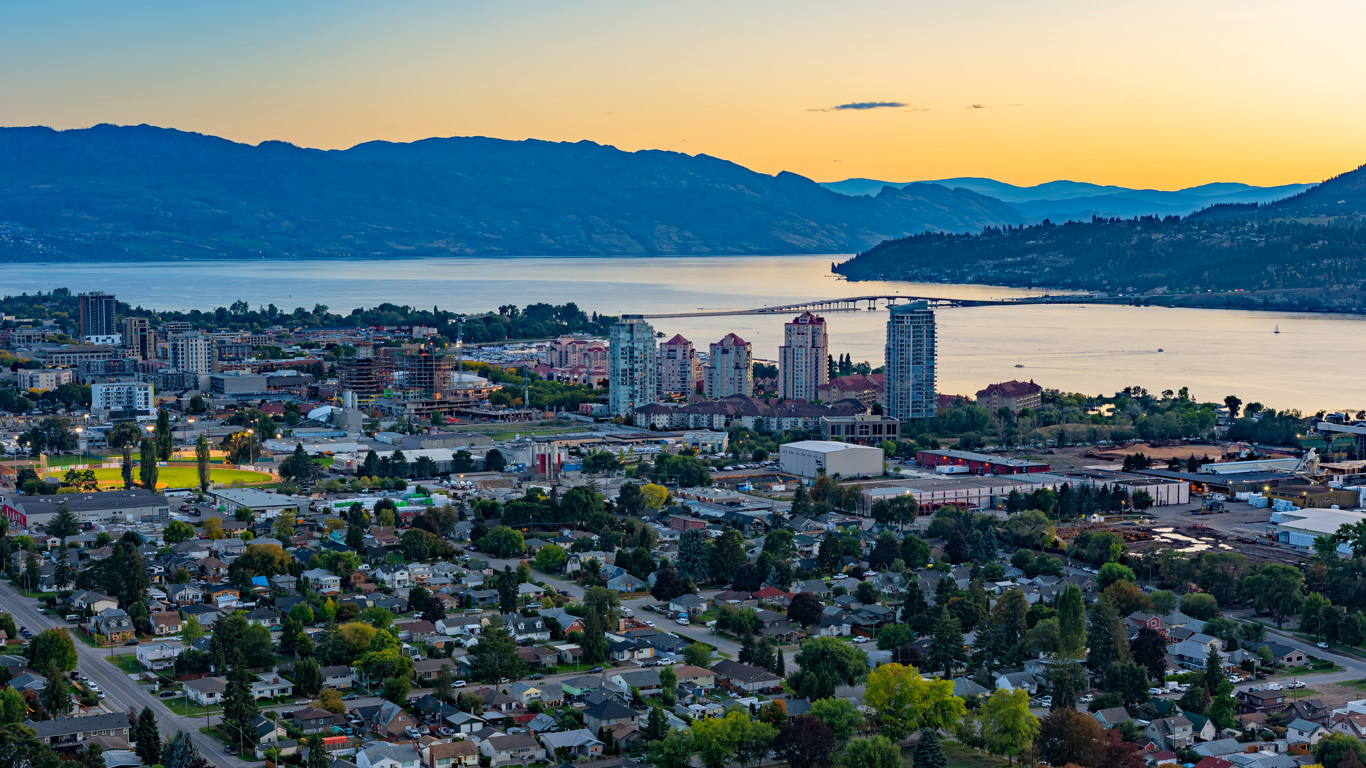
Kelowna, a lakeside city in the Okanagan Valley in British Columbia’s Southern Interior, has long attracted newcomers to its picturesque area.
The 2021 Census of Population counted 222,162 people living in the Kelowna census metropolitan area (CMA) , which includes surrounding areas such as Lake Country, itself the 16th fastest-growing municipality (among those with at least 5,000 habitants) in Canada.
Kelowna’s population grew by 14.0% from 2016, compared with the provincial average of 7.6% and the national average of 5.2%. It’s also the highest five-year growth rate among CMAs, as only the Chilliwack CMA (+12.1%), closer to Vancouver, came close.
Alongside the steady rise in population in Kelowna is an increase in demand for housing. And for many Kelowna residents, that has translated to increased costs and less homeownership.
Highest growth of renter households among urban areas
In Kelowna, the number of renter households grew by over half (+54.1%) from 2011 to 2021, the highest growth rate among CMAs and well above the national average of 21.5%.
There were 94,335 households in Kelowna in 2021, a 15.9% change from 2016. The homeownership rate was 70.7%, ahead of the provincial average of 66.8%. About 3 in 10 (29.2%) households were renter households.
Shelter costs rising faster for renters
Over 4 in 10 (43.7%) renter households in Kelowna were spending 30% or more of their income on shelter costs in 2021, more than double the rate of owner households (17.7%).
The average monthly shelter cost was $1,618 for owners and $1,546 for renters in 2021. That’s up by $411 for owners and up by $447 for renters from a decade earlier. For renters, most of that bump happened from 2016 to 2021, one indicator of increased demand pushing up prices in the rental market.
Some of that increase in demand has come from more would-be homebuyers who have turned instead to renting because of higher home prices and housing supply. This is something Canadians have increasingly experienced in recent years, alongside significant migration away from large cities—notably during the COVID-19 pandemic—to find more suitable properties in smaller urban areas such as Kelowna.
Nearly half of new builds were tenant-occupied in 2021
According to the 2021 Census, the average owner-estimated value of a single-detached dwelling in Kelowna sharply increased from $551,000 in 2011 to $943,000 in 2021.
Other single-attached dwellings, such as semi-detached and row houses, saw their average values go from $382,400 to $644,000. Apartments (including low rises, high rises and duplexes) saw the largest percentage increase, up by nearly three-quarters (+73.8%) to $593,000 in 2021, a slightly higher rate than singles (+71.1%).
In Kelowna, nearly half (47.7%) of occupied dwellings built from 2016 to 2021 were tenant-occupied, ahead of the national average (40.4%) but behind other CMAs such as Québec (61.3%), Halifax (60.7%) and Montréal (55.1%).
Condos accounted for over 4 in 10 (42.8%) of dwellings built in Kelowna from 2016 to 2021. Two-thirds of the condos built over this period were rental properties. By way of comparison, four in five condos built from 1991 to 2000 were the home of the owner.
In 2020, nearly 1 in 10 (9.4%) families in Kelowna reported rental income, ranking fourth nationally behind Vancouver (11.2%), Victoria (10.4%) and Toronto (9.8%).
A recent snapshot
In 2022, the average rent for a two-bedroom unit in Kelowna was $1,665 per month and the average rent for a three-bedroom unit was $2,193 per month. The vacancy rate for apartment structures of six units and over was 1.2%, down from 2.1% in 2020.
From January to June 2023, there were 1,765 housing starts and 967 completions in Kelowna. Both starts (+14%) and completions (+2%) were up compared with the same period in 2022.
For the latest on housing, check out our Housing Statistics portal.
StatsCAN app
Did you know you can read StatsCAN Plus articles and more on the StatsCAN app? If you’re already using the app, let us know what you think by leaving a review in the Apple App Store and Google Play.
Contact information
For more information, contact the Statistical Information Service (toll-free 1-800-263-1136; 514-283-8300; infostats@statcan.gc.ca) or Media Relations (statcan.mediahotline-ligneinfomedias.statcan@statcan.gc.ca).
